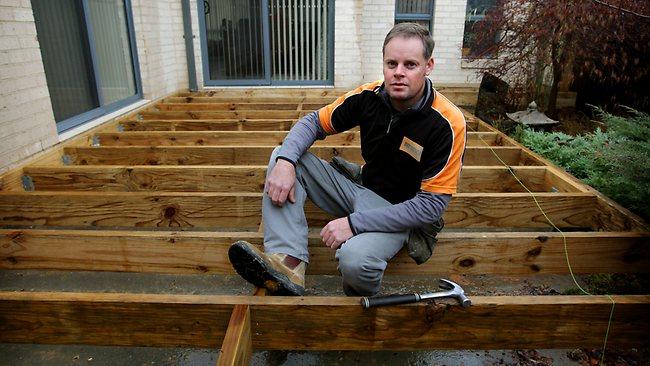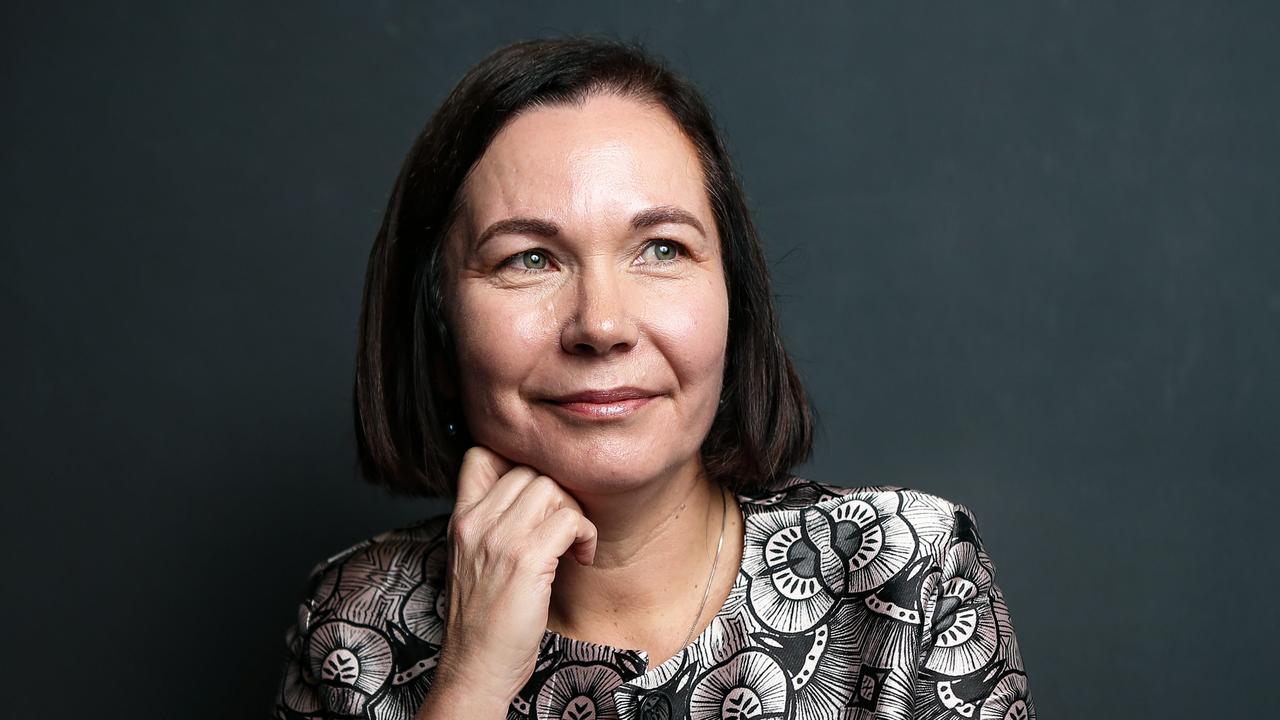
WHINING about how little family time you have these days? If you are reading this newspaper over your Saturday morning coffee, and thinking about your lost family leisure time because you might have to do the shopping or take your kids to sport, think about Jason Petts.
He is a carpenter who lives in the idyllic Queensland resort town of Hervey Bay, hopping-off point to pristine Fraser Island. On weekends, when most suburban fathers are jostling in supermarket car parks or at the oval with mothers organising the oranges, Petts is probably working -- in Canberra.
He is part of the new army of fathers who can't spend weekends with their children or, for that matter, much time during the week. Petts is part of a new social phenomenon, the fly-in, fly-out workers. These men -- and it is basically a male phenomenon -- are living lives semi-detached from their families and homes.
The vast majority are working in the mining industry, but increasingly tradesmen such as Petts are using their own initiative and contacts to become fly-in, fly-out workers (or FIFOs); in his case exploiting the building boom in Canberra to support a family lifestyle that he and his wife, Vanida, have chosen.
In Queensland particularly, the mining boom has made this pattern of work a very common occurrence. Petts's next-door neighbour is a FIFO mine worker. It has enormous economic benefits. Despite the cost of flying, in Canberra Petts earns almost three times what he could if he stayed put in Hervey Bay. But FIFO work brings some obvious -- and not so obvious -- problems.
The idea that family lifestyle can remain intact while the men are mobile is not a new idea.
Certainly it is an idea familiar to anybody from an immigrant background. Modern transport and communications have made it much easier to do and, although once considered a matter of bitter necessity, these days it is often a deliberate lifestyle choice.
Originally Petts, 39, and his 37-year-old wife made the move to Hervey Bay from Canberra with their two girls, aged 12 and 7, because of the children's chronic asthma. They established themselves in their little corner of paradise during the period of the Fraser Coast's tourist boom, when there was plenty of work for both.
Vanida works for the local council in tourist information, and Jason was kept fully occupied with the new developments. Then came the global financial crisis. The backpacker industry dried up, the more upmarket tourism started to shrink and now the only really thriving sector is aged care, in one of the oldest demographics in Australia. Then the exodus of men began, most going to Gladstone to work in the mines.
According to Vanida Petts, at least six of the tradesmen's families that originally went to Hervey Bay at the same time as the Petts have left. Of those that remain, most of the men are doing FIFO work. Says Jason: "If you go up there during the week, there are no men. They're all working, some as far north as Yepoon (435km away). Anywhere really. Most have gone to the mines . . . I thought I'd stick to doing something I knew and we have family in Canberra".
According to Ted Sorensen, state member for Hervey Bay and former mayor, despite the knock-on effect of mining, it is not all positive. The mining boom has leached many of the skilled workers and much of the support and people needed for the survival of the infrastructure of a town like Hervey Bay. Whether it is bus drivers abandoning their buses to drive at the mines or nurses, also needed at the mining settlements, or plumbers -- or carpenters.
Meanwhile, in the sumptuous houses of the coastal towns, whether Hervey Bay or Rosslyn Bay, where many Rockhampton-based mine workers actually live, the families carry on without them. The effects can be imagined. Mine workers tend to work an average of three weeks on and two weeks off, and they work flat out when they work. Jason Petts works for six weeks in Canberra, including weekends, and spends about two weeks at home before boarding the flight to Sydney then driving three hours to Canberra.
The Petts are a resilient family: they Skype, they phone and text frequently, and they have family support in both Canberra and Hervey Bay. Vanida Petts loves the coastal environment, the small regional school and the community. She doesn't want to leave, but she can see the shrinking social networks that the downturn and the male exodus has produced -- and her husband has started to notice that Latisha, the younger child, has started to ask if he is going again.
It is not unusual for families to simply crack under the strain of the separation. Very young children can be acutely distressed by fathers coming and going. George Christensen, the federal member for Dawson, whose electorate takes in Rockhampton and Mackay, tells of one mine worker breaking down in tears as they chatted over a beer when he recalled that his little son, after excitedly jumping all over him on his last trip home, had suddenly become terribly distressed when he "disappeared" inside the bathroom.
Christensen points out that many small communities in western Queensland are "up in arms" about the proposals that some mining companies are heading towards a completely FIFO workforce, considering it an abrogation of their social responsibilities to the small towns near where they operate. According to Christensen, the FIFO phenomenon "has caused massive dislocation of employment. Small business people can't find employees because everyone is working in the mines."
This has to be balanced against the economic benefits to individuals, and to larger centres such as Mackay, which since 2003 has had rapidly growing population as a "whole family" phenomenon.
However, as the mining boom flourishes, individual families simply have to tailor their dreams of the idyllic Australian lifestyle to the new realities of the tyranny of distance. Curiously, we have yet to come to grips with this demographic reality. It is odd, for example, that no questions on long-distance commuting of the FIFO variety were asked on the census.
Among a plethora of "social information" that sometimes seems of dubious value, one of the most extraordinary social phenomena of our time was hardly addressed, not surprising when ideology often trumps practical reality in social research. There is a lot of talk about the two-speed economy but not much about the social effects on families adjusting to a two-speed lifestyle.
Meanwhile, an army of working men and resilient families are carrying on. But the Petts have almost had enough of the FIFO life. They have put their house on the market and will probably move to a bigger centre in Queensland. Like many other families, they are discovering that it is better to have a life rather than a lifestyle.




To join the conversation, please log in. Don't have an account? Register
Join the conversation, you are commenting as Logout